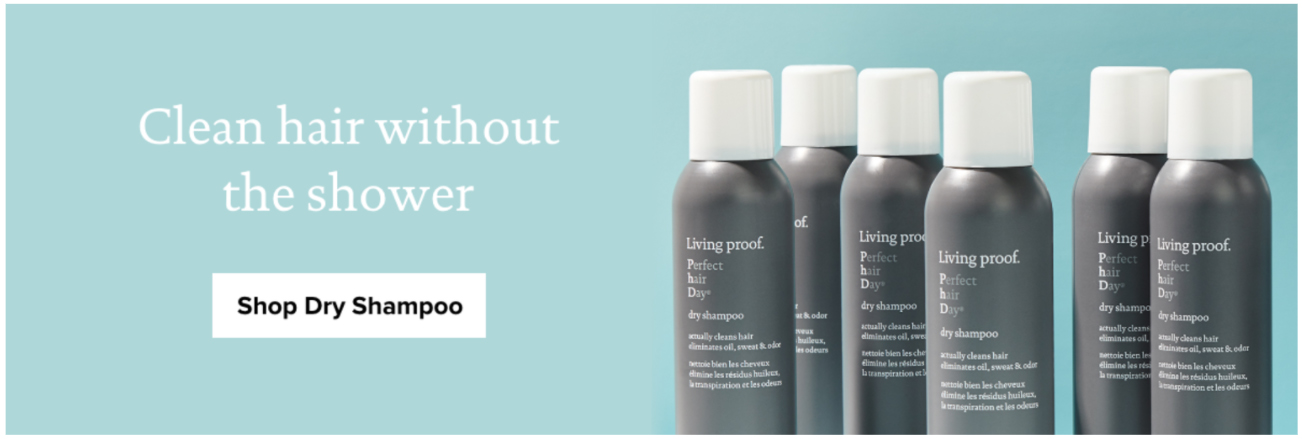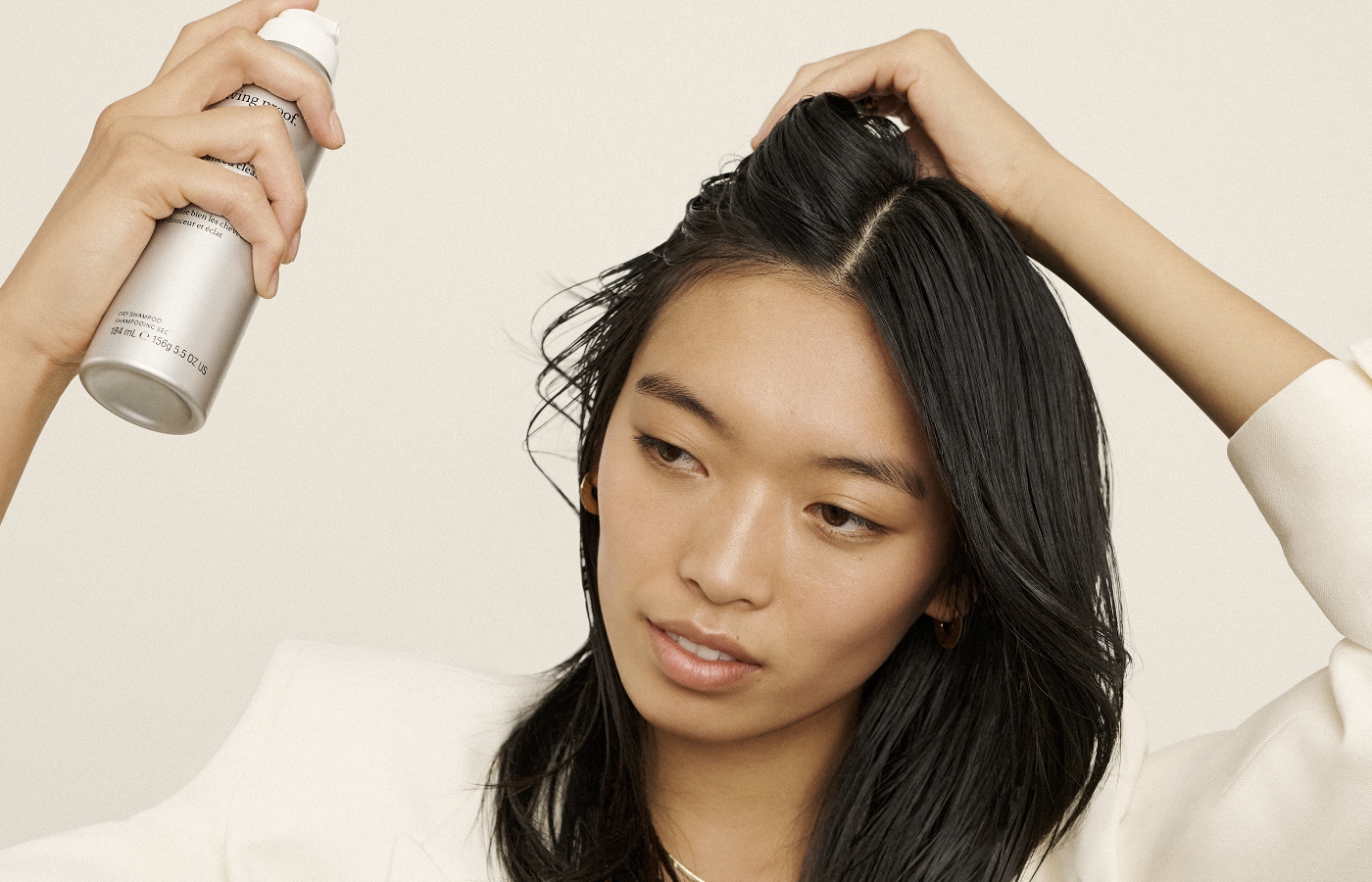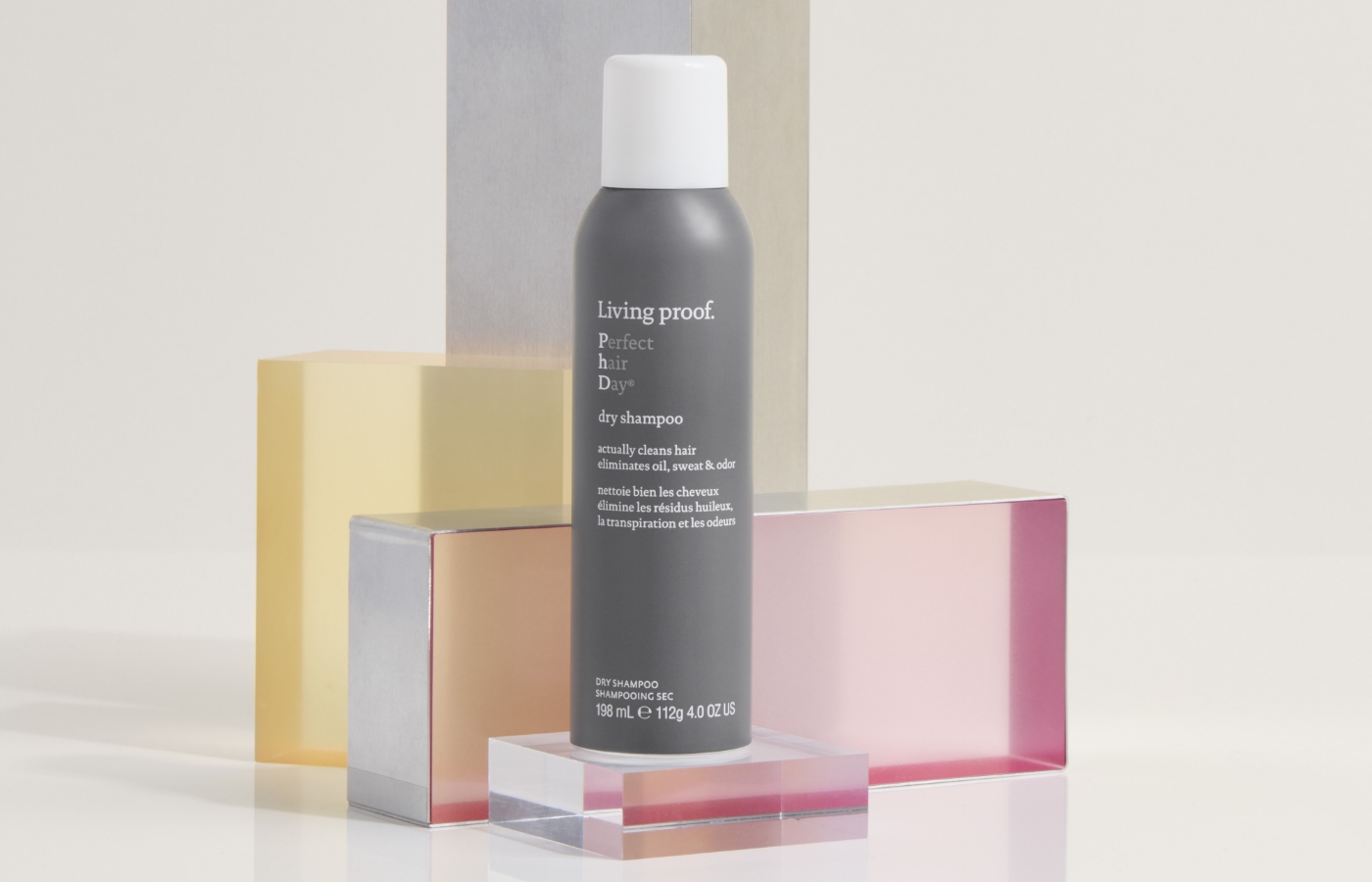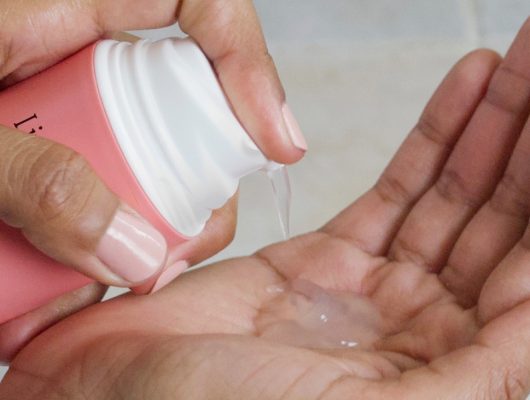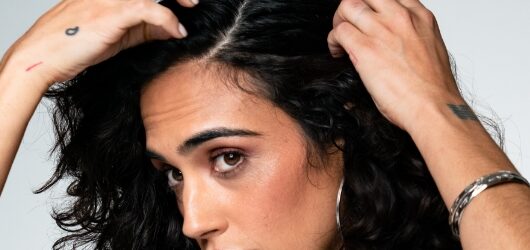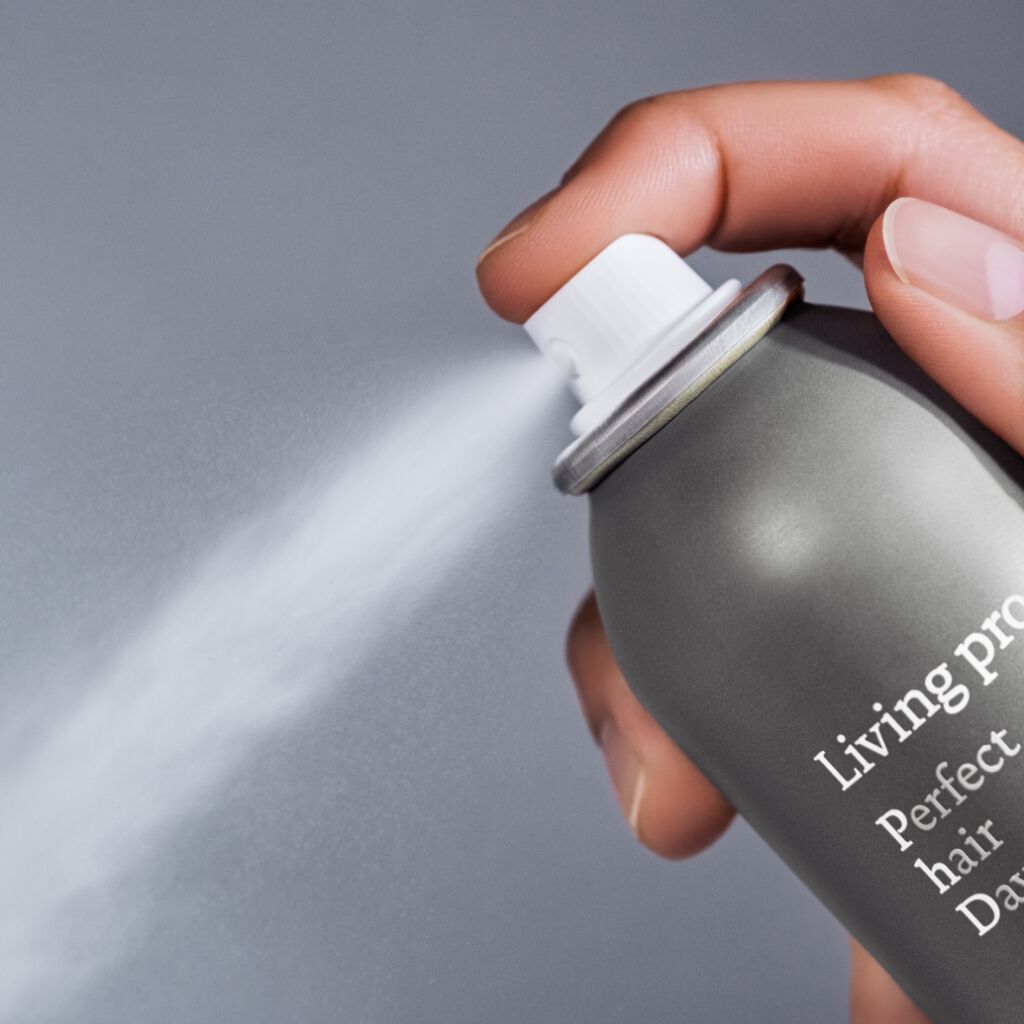
How to Use Dry Shampoo the Right Way for Best Results
Dry shampoo is a staple in the collections of hair stylists everywhere, and for good reason: It cleanses hair between washes and provides a boost for oily strands, helping preserve styles longer and saving precious time.
But what is dry shampoo used for, and when should you use it? More importantly, how do you use dry shampoo? We answer those and other questions in this in-depth guide.
What is dry shampoo?
A type of shampoo designed to be used without water, dry shampoo provides the perfect pick-me-up between washes by eliminating dirt, oil, and odor from your roots. It can take many forms, including powders, aerosol sprays, and even mousse, and is suitable for all hair textures and types.
The science behind how dry shampoo works is pretty interesting. Hair follicles produce a natural oil called sebum, which acts as a barrier on the skin, protecting it from damage. Sebum is also what keeps your hair healthy and moisturized; however, sebum can build up over time, leaving hair feeling oily or greasy. Most dry shampoos are formulated with silica or starch, both of which absorb excess oil from the scalp and can reduce the appearance of oil.
Although dry shampoo can leave hair looking, smelling, and feeling refreshed, it’s important to note that some dry shampoos shouldn’t be used as a substitute for regular washing. If you want a dry shampoo that not only absorbs oil and eliminates odors but actually cleans your hair, be sure to look for specially formulated products that offer cleansing capabilities.
When to use dry shampoo
When and how often you choose to use dry shampoo depends entirely on your hair type and texture, styling preferences, and lifestyle. However, these are some of the most popular dry shampoo uses:
After a Sweat Build Up
Many people like to use dry shampoo after spending time outdoors in the sun, after a workout, or at the beginning or end of their day. What do all of these examples have in common? They’re when sweat and sebum are most likely to build up on the scalp, which can lead to the appearance of grease — but it’s nothing a quick spray of dry shampoo can’t solve. If you choose to use dry shampoo to counteract sweat buildup, make sure your hair is completely dry before you apply.
Between Washes
Whether you don’t have time for a full hair wash or spreading out your wash days to protect your hair, dry shampoo can save you precious time otherwise spent washing, drying, and styling your hair while still leaving it looking fresh and clean. Pro tip: Stash a travel-size can of dry shampoo in your car or gym bag for a quick and easy refresh while on the go.
For added volume
Those with fine hair may find that their hair looks limp between washes. The good news is that dry shampoo can help add volume and body to your hair. To achieve best results, hold a section of your hair upright and apply product from the roots to mid-length. Repeat this process until you’ve sprayed all sections of your hair and shake out or comb through to help the dry shampoo evenly disperse.
Another method is to tease each section first and then apply dry shampoo normally to lock in the style while maintaining volume.
How to apply dry shampoo [the right way]
Not sure how to use dry shampoo? You’re in luck — it takes just four simple steps. The best way to use dry shampoo is as follows:
Step 1
Divide your hair into sections. This will enable you to apply the dry shampoo more easily and for the dry shampoo to absorb oil more fully.
Step 2
Shake the canister before applying to ensure even distribution of the product and to prevent any clogging on the nozzle.
Step 3
Hold the canister six to 10 inches away from your head. Start applying dry shampoo to your roots, where your hair is oiliest, and gradually work through other oily or sweaty sections. You should see a fine mist of white powder on your hair — that means it’s working.
Step 4
Let the dry shampoo sit for at least 30 seconds, allowing it to fully absorb oil from your scalp. Then, use either your hands or a paddle brush to massage it through your scalp, dispersing it and removing any excess powder. You can also blow dry or diffuse your hair to remove excess powder. Style as desired.
Applying dry shampoo is an easy way to refresh your hair, leaving it looking, feeling, and smelling clean, without having to take the time to actually clean it in the shower. Pair dry shampoo with a daily hair repair treatment to smooth dry ends and keep hair looking healthy between washes.
The do’s and don’ts of dry shampoo
Want to get even more out of your dry shampoo? Follow these dry shampoo tips to see best results:
Do’s
- Do shake the canister before applying to get an even product ratio. Powders can sometimes settle to the bottom, so shaking well before each use (and sometimes between sections of hair) helps ensure consistency.
- Do allow time for dry shampoo to fully absorb. It takes approximately 30 seconds for dry shampoo to activate and cleanse. Before applying more product, give it time to absorb oil and work into your hair’s roots.
- Do section your hair to get even coverage. It’s important to hold the canister at least six inches away from your head and to apply the dry shampoo in a sweeping motion for even coverage. For those with thick hair, separating hair into sections before applying dry shampoo enables the product to reach oily spots closer to the scalp that may be covered by other layers of hair.
- Do pay attention to the ingredients. Look for dry shampoos free from harmful chemicals such as phthalates, sulfates, benzene, parabens, and formaldehyde. It’s also important to look for a dry shampoo that’s formulated to be color safe and safe for chemically treated hair.
- Do carry your dry shampoo with you wherever you go. You never know when your hair may need a quick boost, so having dry shampoo on hand — even when you’re on the go — will help you feel confident that your hair is looking its very best.
- Do choose the right dry shampoo for your hair type. While there are dry shampoos designed to work with any hair type, certain products are specially formulated for specific hair types, such as dry hair, to not only cleanse, but add softness and shine.
Don’ts
- Don’t be afraid to pair your dry shampoo with other products, such as styling products or repair treatments. The key is to start with dry shampoo to absorb any extra oil and odor, and then to apply other hair products and style your hair as you would regularly.
- Don’t worry about the powder. Depending on the color of your hair, you may notice a white, powdery residue after spraying dry shampoo. This residue should be less noticeable after using your hands or a paddle brush to massage the dry shampoo through your scalp and shake out. If there’s any lingering powder, you can use a bristle brush, blow dryer, or diffuser to remove it.
- Don’t be afraid to reapply. Even after applying dry shampoo and letting it settle in, you may notice that your hair still feels a bit oily. If that’s the case, you can apply more product — following the same four steps outlined above — to achieve clean, healthy-looking hair.
- Don’t overuse dry shampoo. While it can be a convenient on-the-go product and is a great addition to your morning routine, it’s still important to wash your hair with regular shampoo. This ensures that you’re fully cleansing your hair and scalp of any residue from hair products.
Making dry shampoo part of your regular routine
Now that you know how to use dry shampoo, you can add time back to your day and skip regular shampoos every time you shower. Less washing can preserve your hair’s natural oils, reduce the amount of damage often caused by hard water, and help color-treated hair last longer.
The science behind Living Proof’s Perfect hair Day™ Dry Shampoo and Advanced Clean Dry Shampoo leaves hair feeling clean and revitalized in just a matter of minutes. Whether you want to make it part of your morning haircare routine or carry it with you to refresh your hair throughout the day, dry shampoo is versatile enough to work with any situation.
What makes the Perfect hair Day™ Advanced Clean Dry Shampoo different?
Not all dry shampoos are made the same — some use harsh chemicals that can lead to dry scalp and other buildup issues. Others soak up oil, but don’t actually clean hair and can leave behind sweat and odor.
Living Proof’s Advanced Clean Dry Shampoo was designed using Triple-Action Cleaning Technology, which offers all the benefits of shampooing your hair and gives you similar results as if you washed it in the shower.
Here’s you can expect from our Advanced Clean Dry Shampoo:
- Fast-absorbing powders that make quick work of oil and sweat
- An odor-neutralizer that leaves behind a light, fresh-smelling scent
- Formulated without phthalates, sulfates, parabens, talc, formaldehyde, silicones, or benzene
- Designed to be easily brushed out and to leave behind no residue
- Sebum balancers that leave hair feeling fresh and clean
- Conditioning agents to give your hair a soft, washed look and feel
Ready to find your perfect haircare routine?
Get personalized product recommendations for your hair type and texture in a matter of minutes when you take our short haircare quiz.
Dry shampoo FAQs
Q: What is the correct way to use dry shampoo?
A: Although instructions may differ, to achieve best results, follow these four easy steps:
- Divide your hair into even sections.
- Shake the canister before applying.
- Holding the canister six to 10 inches away from your head, start applying dry shampoo to your roots, where your hair is oiliest, and gradually work your way to other oily or sweaty sections.
- Let the dry shampoo sit for at least 30 seconds and then use either your hands or a paddle brush to massage it through your scalp, dispersing it evenly. You can use a bristle brush, blow dryer, or diffuser to remove any excess powder (and the oil and sweat it’s absorbed).
Q: Can I use dry shampoo every day?
A: Although dry shampoo can be a convenient way to extend time between washes, daily usage can lead to buildup, which can clog hair follicles and cause scalp to become dry and irritated. That said, much of this depends on your hair type and texture, your lifestyle, and which dry shampoo you use. In general, dry shampoo should not replace regular washing completely.
Q: Does dry shampoo leave behind residue?
A: Since most dry shampoos are powder-based, they can leave behind a little powder residue. This is totally normal, though (and a sign that your dry shampoo is working)! To remove excess powder, simply brush your hair through with a bristle brush or use a blow dryer or diffuser.
If you want to avoid the residue completely, try Living Proof’s Perfect hair Day™ Advanced Clean Dry Shampoo, which has a built-in powder removal system that leaves your hair clean and clear.
Q: How often should I use dry shampoo?
A: The answer to this question will vary depending on your hair type and texture. Those with thick or textured hair may find that they need to apply less regularly than those with thin or fine hair.
Q: Can you use dry shampoo on greasy hair?
A: Yes — in fact, greasy hair is a perfect use for dry shampoo. Dry shampoo is designed to absorb excess oil from the scalp and strands, leaving hair looking, feeling, and smelling fresh and clean.
Q: Can I use dry shampoo on wet hair?
A: Although you technically can use dry shampoo on wet hair, for best results, you should wait until your hair is completely dry before applying.
